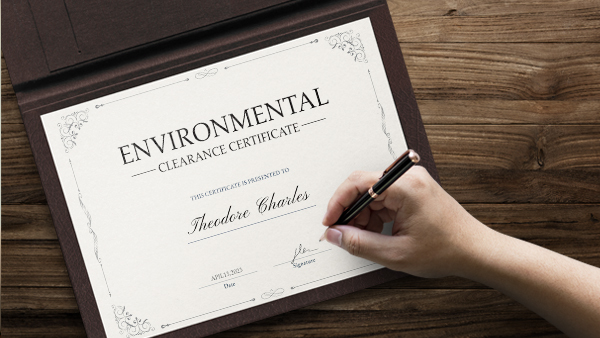Environmental Clearance Certification: A Way Towards Sustainability
April 14, 2023
Environmental Clearance Certification is mandatory for certain companies to operate in India. The day-to-day tasks of some companies can cause environmental issues like water contamination, landslides and floods. Hence, the Indian government made it mandatory for such companies to get an Environmental Clearance Certificate to start their business in the country.
Which Companies Require Certification
According to Schedule 1 of the EIA Notification of 2006, 29 types of businesses must get an Environmental Clearance Certificate. Among these organisations are biosphere reserves, hill and beach resorts, airports, and areas of scientific and geological nature.
The government has also created categories that further divide all companies according to the impact they have on the environment. They are coded by examining their pollution potential index in four colour-based categories– red, orange, green and white. Only businesses marked as white (being the lowest on the scale) are exempted from fulfilling the requirement.
Another categorisation that the government has made is splitting companies as Projects A and Projects B based on the organisation’s size and environmental impact. Companies classified as Category A, like airports and nuclear-based projects, have to be assessed by the Central Government, and Category B companies, like MSMEs and highway projects, are evaluated by the State/Union territory government.
Steps To Receive Certification
The process for receiving an Environmental Clearance Certification requires a company to go through the following 6 steps:
Step 1: The authorities visit the work site to inspect & ensure that guidelines set by the government are being followed. If the site doesn’t pass the inspection, the company will have to relocate their office to a place that complies with the regulations.
Step 2: The company then undergoes an evaluation as to which category the company falls under – red, orange, green or white. This is done to judge whether the business needs an Environment Clearance Certification.
Step 3: The company must then submit an Environmental Impact Assessment (EIA) report to the respective State Pollution Control Board (SPCB) and the State-based Forest Department if the site is near or within forestland. SPCB assesses the quality of the production process, and the pollutants the site is likely to produce. If everything is in order, the SPCB issues a Non-Objection Certificate (NOC).
Step 4: Before the SPCB issues the NOC, a public hearing is conducted concerning the clearance. The hearing is vital as it gives the residents living near the site a stage to convey their concerns to the government, if any. The committee, composed of the District collector, Department of Environment and Forest, and Gram Panchayat (to name a few), presides over the hearing, decides the clearance clauses, and passes it on to the Ministry of Forest and Environment (MoFE) for approval.
Step 5: An application can then be filed for the certificate. If the company falls under Category A, the submission has to be made to the MoFE, and if it comes under Category B, it should be made to the state government. The application, after approvals by the respective authorities, is then moved to the Environmental Appraisal Committee, which recommends changes and suggestions regarding the application’s rejection or acceptance.
Step 6: Once all the forms are filled, documents are submitted, and deliberations are done, the ministry issues a Clearance or a Rejection Certificate under the Forest Act of 1980 to the company. The Clearance certificate will stay valid for five years before the company has to apply for a renewal.
Depending on how your organisation fares under the scrutiny of the authorities, you may be allowed to operate in India, maybe with certain changes to minimise the environmental impact.
Environmental Clearance Certificate is a positive step towards reducing the corporate world’s adverse impact on the planet. The certification helps weed out harmful practices and help eco-friendly operations flourish, changing how businesses create and sell their product. The document also promotes a good relationship between authorities, environmentalists, and companies and helps decrease the judicial dispute that could happen if the certificate was not in play.

